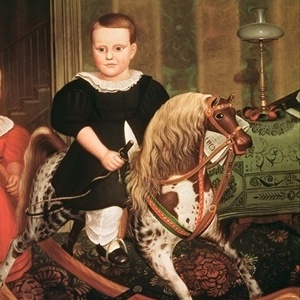Europe

The Little Cartesian Devil
The reversal of circumstances that German cartoonists emphasized seemed generally to exercise considerable sway over this use of symbols. Here, Napoleon, who strode so large over Europe, is bottled and examined.

The Great Man
German cartoonists tried to reduce Napoleon down to size, in this case, the size of mice! Here the mice serve as courtiers.

The Great Heroism of the Nineteenth Century
As in other caricatures, foreigners tried to humiliate Napoleon, once again using mice to represent those who would now attend him.

The Exorcism: Ridding France of the Devil Napoleon
The seal in the foreground, with its fleur–de–lys, indicates a return to royalism after France’s liberation from Napoleon. In addition, the secularism associated with the Revolution is countered with the image’s reference to the religious practice of exorcism.

His Monument: Napoleon's Past and Future Are FIlled With Dead Bodies
This Janus–like figuration of Napoleon haunts the viewer as it suggests a future filled with skulls. Indeed, the unprecedented deaths from war and conquest of the last two centuries make this image seem predictive.

Celebrating Napoleon's Birthday on the Island of St. Helena
In this cartoon, Napoleon is portrayed as a buffoon, riding a goat in a charge against rodents, mocking his warlike instincts.

Liberty in the Form of the Goddess of Youth
Mary Green of Worcester, MA, created this embroidery in 1804 at the age of 16. She based it on the 1796 engraving, "Liberty in the Form of the Goddess of Youth Giving Support to the Bald Eagle," by artist-entrepreneur, Edward Savage (fig. 2).

Hobby Horse
This oil on canvas painting by an unknown American folk artist was painted around 1840. It depicts two siblings at play.

Neolithic Baby Burial
This infant burial is from Çatalhöyük , a Neolithic settlement in Turkey that was occupied continuously for 2,500 years, between 8000 and 6400 BCE. The infant was between six months and one year old, and the burial demonstrates great care.

Sibling Burial
The two children whose skeletons are shown in this photograph were both under 10 years of age, and were probably buried at the same time. An earlier burial of a baby was found at a slightly lower level in the space between them.